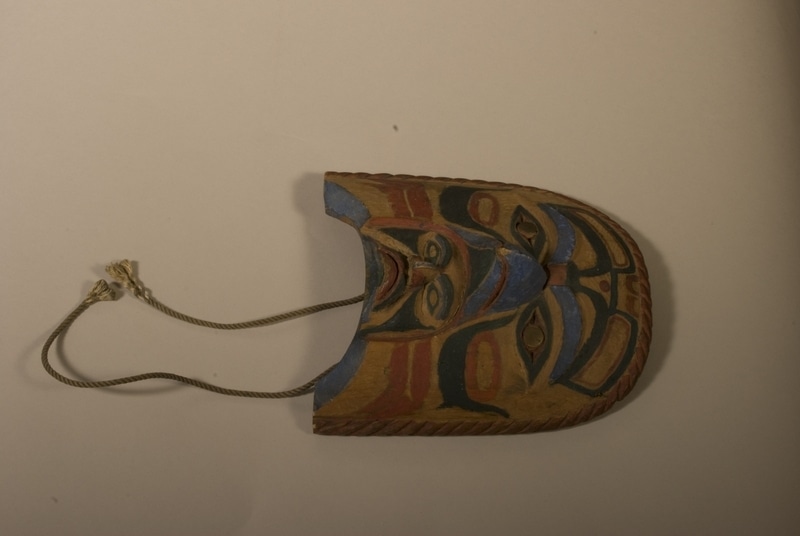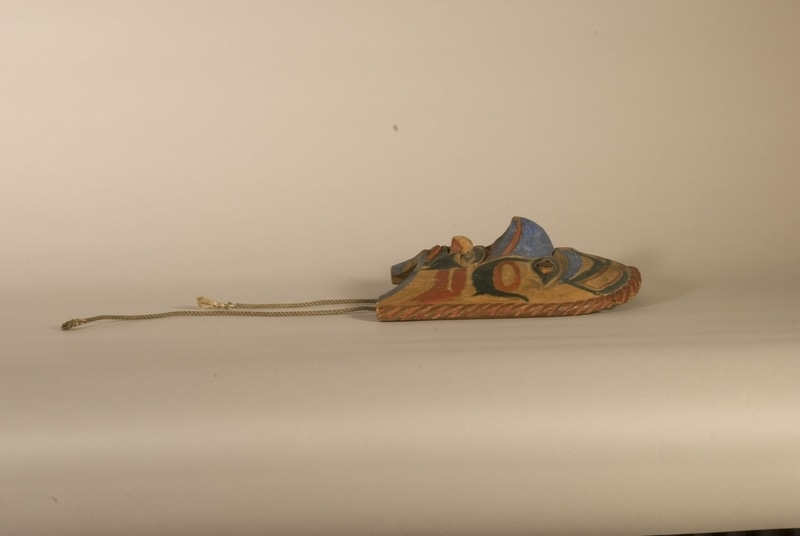Mask Item Number: E 1910.15 from the MAA: University of Cambridge



Description
A carved and painted frontlet that does not have the associated headdress but there is a row of nails on the back of the frontlet, some still with material attached, where it would have been afixed to the headdress. The main crest carved is an eagle with blue eyebrows and beak. The eagle' s ears are painted as U-froms together with wing-like U- forms and ovoids below the eyes, together with double red claw-like lines. The eyes are formed from brass thumb tacks. Below the eagle' s beak a humanoid face has been carved with a down-turned mouth and flared red nostrils. Surrounding the arched frontlet a red twisted rope design has been carved. The lower edge of the frontlet has an arched section cut away.; Good
Context
In 1994 Dr George MacDonald, of the Canadian Museum of Civilisation, suggested that the frontlet was Nootka of Nuu-Chah-Nulth, owing to the blue colours, broad expanse and rope-style edging. The original European tribal names and, where possible, current tribal names have both been given in separate GLT fields.; Frontlets were worn by hereditary chiefs and were carved in the form of lineage crests. The frontlets were worn during potlatches and winter ceremonials and were part of chiefly regalia. As a chief danced he would flick his head forwards and backwards creating a momentary transformation of the individual into the live crest creature, compressing lineage history into one moment. The frontlets were attached to a head band or headdress often made from ermine skins, fabric, and cedar bark, with up- standing seal lion whiskers. Eagle down was put on the whiskers and flicked to the ground as the dancer moved as a sign of good will.
Item History
- Made in British Columbia, Canada
- Received from Dr. J.W.L. Glaisher during 1910
What
Who
- Culture
- Kwakwaka'wakw
- Received from
- Dr. J.W.L. Glaisher
Where
- Holding Institution
- MAA: University of Cambridge
- Made in
- British Columbia, Canada
When
- Acquisition Date
- during 1910
Other
- Keyword
- Masques and Drama; Ceremonial Objects; Personal Adornment